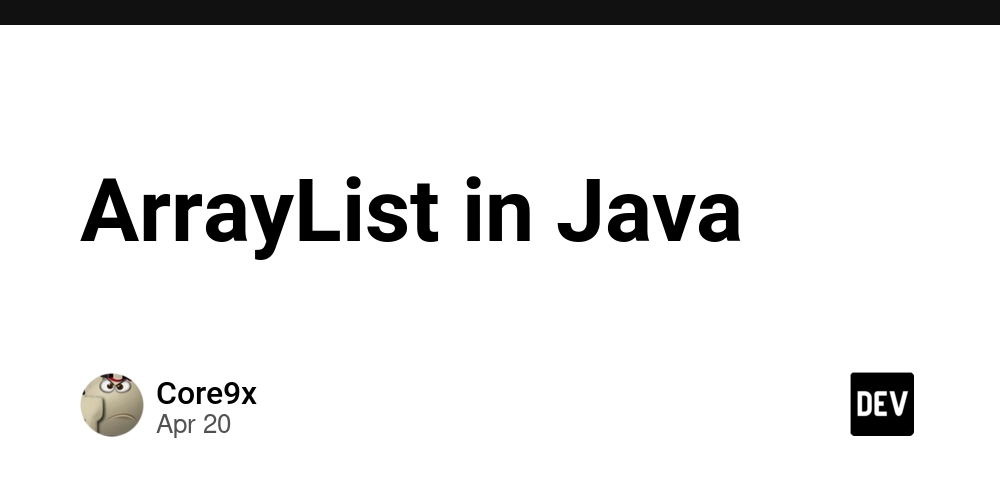ArrayList in Java
All elements are stored in contiguous memory locations, like a traditional array, but with the ability to resize dynamically. GET Operation: Getting an element at a specific index takes O(1) time complexity. The formula for retrieving an element at a specific index: memory_address = base_address + (index * element_size) base_address: the address of the first element element_size: 4 bytes for int, 8 bytes for double,… Example: Index Value Memory Address 0 10 1000 1 20 1004 2 30 1008 3 40 1012 base_address = 1000 (address of the first element) element_size = 4 bytes (for int) To access the value at index 2: 1000 + (2 *4) = 1008 INSERT Operation: Requires shifting subsequent elements (especially when inserting at the middle or beginning) The complexity is O(n) Best case: Adding an element to the end of the list takes O(1) time complexity when there is enough capacity. Worst case: Adding an element to the middle or beginning of the list takes O(n) time complexity DELETE Operation: Requires shifting subsequent elements (especially when inserting at the middle or beginning) The complexity is O(n) Best case: Deleting the last element of the list has a time complexity of O(1) since no shifting is required Worst case: Deleting an element at the middle or beginning of the list has a time complexity of O(n), which requires shifting all subsequent elements. RESIZING: The default capacity size is 10 When the ArrayList exceeds its current capacity, it will create a new, 50% larger array and copy all existing elements into a new array. Example of Resizing: Initial capacity: 10. When adding the 11th element: A new array of size 15 (10 + 50% of 10) is created. The existing 10 elements are copied into the new array. The new element is then added. SUMMARY An ArrayList is not synchronized and stores its elements in contiguous memory locations. GET operation has O(1) time complexity ADDING and REMOVING have O(n) time complexity When using: Random access is required Read heavy operations

All elements are stored in contiguous memory locations, like a traditional array, but with the ability to resize dynamically.
GET Operation:
Getting an element at a specific index takes O(1) time complexity.
The formula for retrieving an element at a specific index:
memory_address = base_address + (index * element_size)
base_address: the address of the first element element_size: 4 bytes for int, 8 bytes for double,…
Example:
| Index | Value | Memory Address |
|---|---|---|
| 0 | 10 | 1000 |
| 1 | 20 | 1004 |
| 2 | 30 | 1008 |
| 3 | 40 | 1012 |
- base_address = 1000 (address of the first element)
- element_size = 4 bytes (for int)
- To access the value at index 2: 1000 + (2 *4) = 1008
INSERT Operation:
Requires shifting subsequent elements (especially when inserting at the middle or beginning)
The complexity is O(n)
Best case: Adding an element to the end of the list takes O(1) time complexity when there is enough capacity.
Worst case: Adding an element to the middle or beginning of the list takes O(n) time complexity
DELETE Operation:
Requires shifting subsequent elements (especially when inserting at the middle or beginning)
The complexity is O(n)
Best case: Deleting the last element of the list has a time complexity of O(1) since no shifting is required
Worst case: Deleting an element at the middle or beginning of the list has a time complexity of O(n), which requires shifting all subsequent elements.
RESIZING:
The default capacity size is 10
When the ArrayList exceeds its current capacity, it will create a new, 50% larger array and copy all existing elements into a new array.
Example of Resizing:
Initial capacity: 10.
When adding the 11th element:
- A new array of size 15 (10 + 50% of 10) is created.
- The existing 10 elements are copied into the new array.
- The new element is then added.
SUMMARY
An ArrayList is not synchronized and stores its elements in contiguous memory locations.
GET operation has O(1) time complexity
ADDING and REMOVING have O(n) time complexity
When using:
Random access is required
Read heavy operations









































































































































































![[The AI Show Episode 144]: ChatGPT’s New Memory, Shopify CEO’s Leaked “AI First” Memo, Google Cloud Next Releases, o3 and o4-mini Coming Soon & Llama 4’s Rocky Launch](https://www.marketingaiinstitute.com/hubfs/ep%20144%20cover.png)




























































































































![[DEALS] The All-in-One Microsoft Office Pro 2019 for Windows: Lifetime License + Windows 11 Pro Bundle (89% off) & Other Deals Up To 98% Off](https://www.javacodegeeks.com/wp-content/uploads/2012/12/jcg-logo.jpg)



























![Is this too much for a modular monolith system? [closed]](https://i.sstatic.net/pYL1nsfg.png)






















































































































_Andreas_Prott_Alamy.jpg?width=1280&auto=webp&quality=80&disable=upscale#)
































































































![What features do you get with Gemini Advanced? [April 2025]](https://i0.wp.com/9to5google.com/wp-content/uploads/sites/4/2024/02/gemini-advanced-cover.jpg?resize=1200%2C628&quality=82&strip=all&ssl=1)













![Apple Shares Official Trailer for 'Long Way Home' Starring Ewan McGregor and Charley Boorman [Video]](https://www.iclarified.com/images/news/97069/97069/97069-640.jpg)
![Apple Watch Series 10 Back On Sale for $299! [Lowest Price Ever]](https://www.iclarified.com/images/news/96657/96657/96657-640.jpg)
![EU Postpones Apple App Store Fines Amid Tariff Negotiations [Report]](https://www.iclarified.com/images/news/97068/97068/97068-640.jpg)
![Apple Slips to Fifth in China's Smartphone Market with 9% Decline [Report]](https://www.iclarified.com/images/news/97065/97065/97065-640.jpg)




































































































































